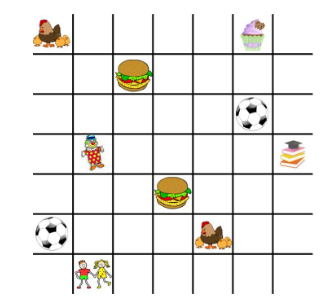The New Zealand Digital Technologies Curriculum is now in draft form and teachers all around NZ have begun to implement it in their classrooms. But are you one of the many teachers who are sitting there thinking about where on earth to begin with it, and how will you possibly be able to fit one more thing into your already frantic class timetable?
Well the good news is that you are already covering some aspects of it without even realising it.
[bctt tweet=”You might be working on students’ Computational Thinking skills without realising it.” username=”donnagolightly1″]
The best place to begin is always at the beginning.
Progress Outcome One from the Computational Thinking strand says : In authentic contexts and taking account of end-users, students use their decomposition skills to break down simple non-computerised tasks into precise, unambiguous, step-by-step instructions (algorithmic thinking). They give these instructions, identify any errors in them as they are followed, and correct them (simple debugging).
Let’s identify the key words here:
- ‘Authentic contexts’. You’ll already be doing this – it simply means relating the learning to the real world your students are living in.
- ‘Decomposition skills’ are just being able to take things apart and see the different pieces involved in the puzzle.
- “Algorithms’ are writing step by step instructions, and aren’t we always encouraging our students to identify their own mistakes and work at fixing them?
[bctt tweet=”Identify the key vocabulary in the Progress Outcomes of the NZ Digital Technology Curriculum & see how it fits with what you’re already doing in your classroom.” username=”donnagolightly1″]
The key to avoiding reinventing the wheel is to look at what you’re already doing and thinking about where you can incorporate these new strands.. Here are two suggestions of how this could be done:
1. Procedural writing is a part of the written language programme. Students write a step by step list of instructions so that the ‘end user’ – the person reading and following their procedure – can complete a specific task.
You’re already working on Progress Outcome One of the Computational Thinking strand. Next time you plan to do a piece of procedural writing with your students, allow time for your students to swap their writing with a buddy. Can their buddy complete the procedure easily or did something go wrong?
If there was a problem, they need to go back and rethink the steps they wrote in their procedure. Now your students are ‘debugging’ – finding the problem and fixing it. This may involve some trial and error along the way.
By including the vocabulary from the Digital Technologies strand, talking about decomposition (seeing all the different parts), algorithms (step by step instructions) and debugging (finding and fixing mistakes) while you are writing your procedures, you are covering two curriculum areas with one activity.
2.Algorithm is a word we often use in our maths programmes. But with a bit of clever thinking we can use it in a different way to meet Progress Outcome One also.
When we are working on mapping activities and even graphs, we can use activities that require students to write a set of step by step instructions to move from one spot to another. That’s right – they can write an algorithm.
Within a grid, create a simple map that is relevant to the learning that is happening in your class programme or that relates to something in the students’ own worlds. Your maps can be as simple or complicated as your students need.
Maybe you have a school fair coming up. Create a grid that has relevant images: (your students may even be able to create their own.)

In discussion with your students, decide on a common language that they will use to write their algorithms, their step by instructions, to get the children from their starting point to the cupcake they want to buy.
The language might involve vocabulary such as up, down, left, right or maybe north, west, east, south – whatever fits with the maths concepts you are working on will be the most appropriate to use.
Swap their algorithms with a buddy. Could they get to the cupcake by following the algorithm or did they need to debug to find and fix the errors?
[bctt tweet=”Finding an error and fixing it is simply debugging that you are probably already using with your students!” username=”donnagolightly1″]
Not only have you focused on the maths concepts of mapping, direction, maybe angles or coordinates, but you have also included the objectives from the first Progress Outcome of the Computational Thinking strand from the new Digital Technologies Curriculum.
All it takes is an understanding of the specific vocabulary from within the new Digital Technology Curriculum. Just as we teach our students, we need to be flexible, adaptable and creative. Once we understand the concepts involved we can use those 21st century skills to find ways of incorporating new ideas into what we are already doing.
For more ideas on ways to include digital technologies meaningfully within your programme, check out our website here.











